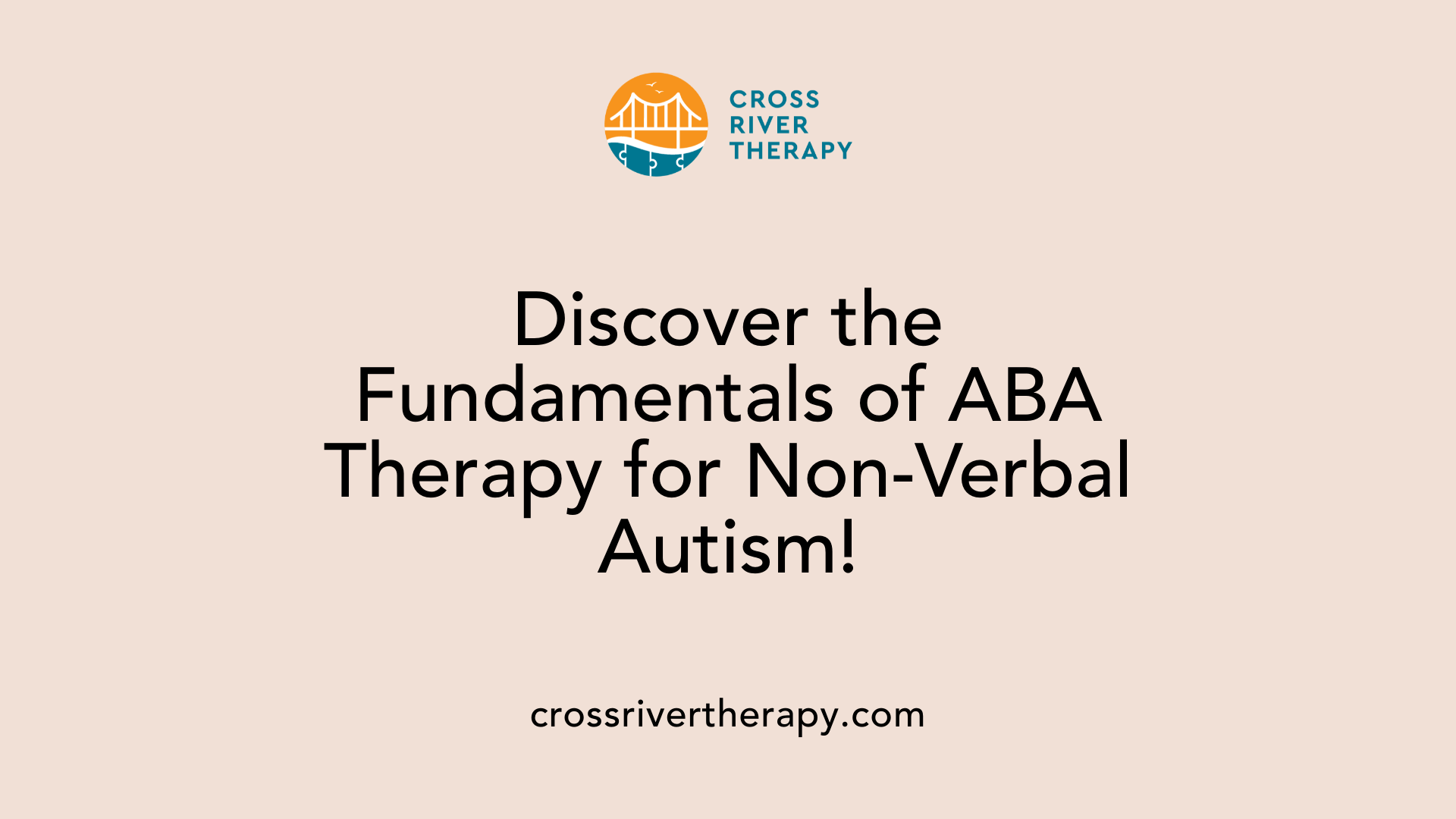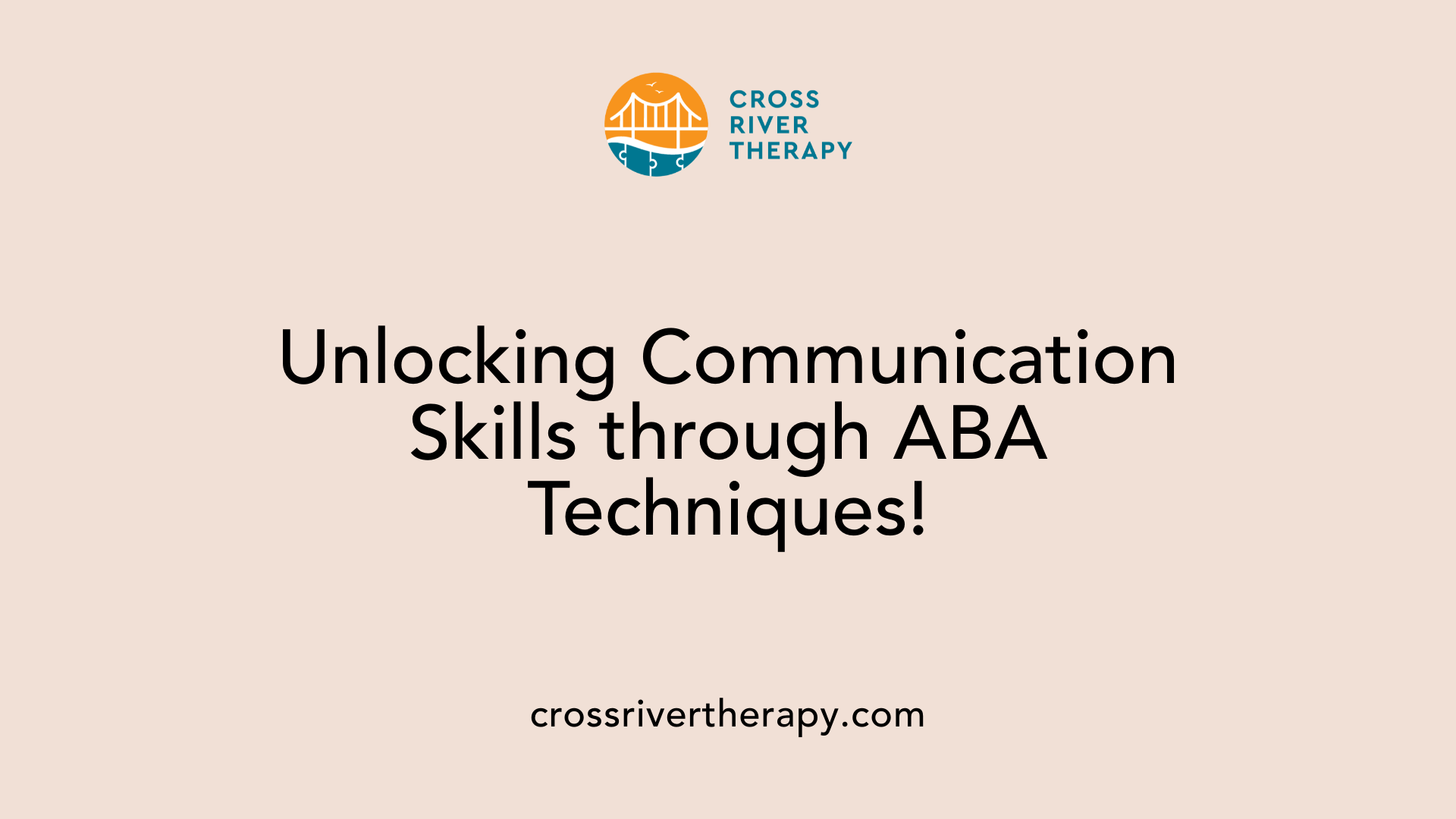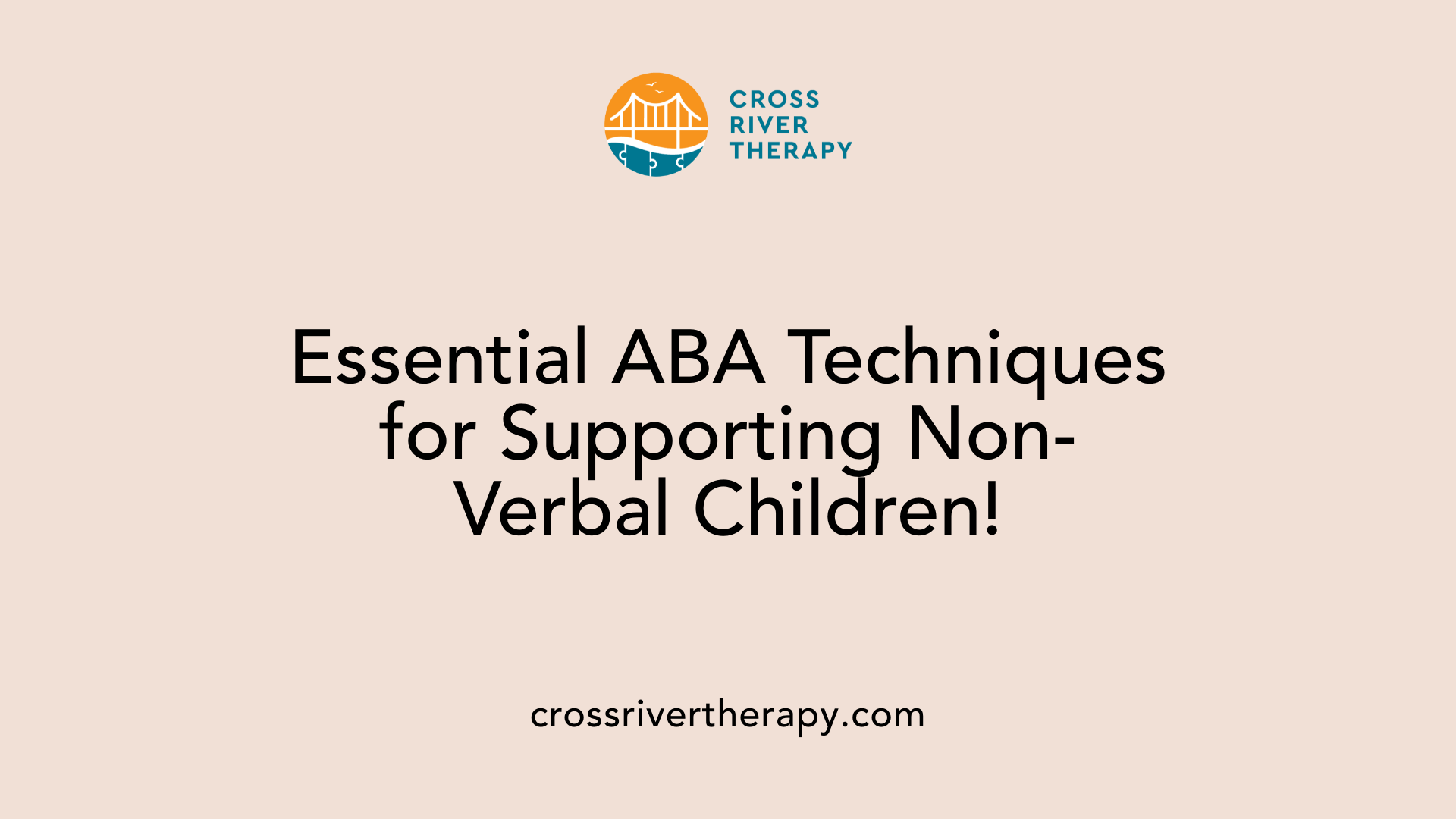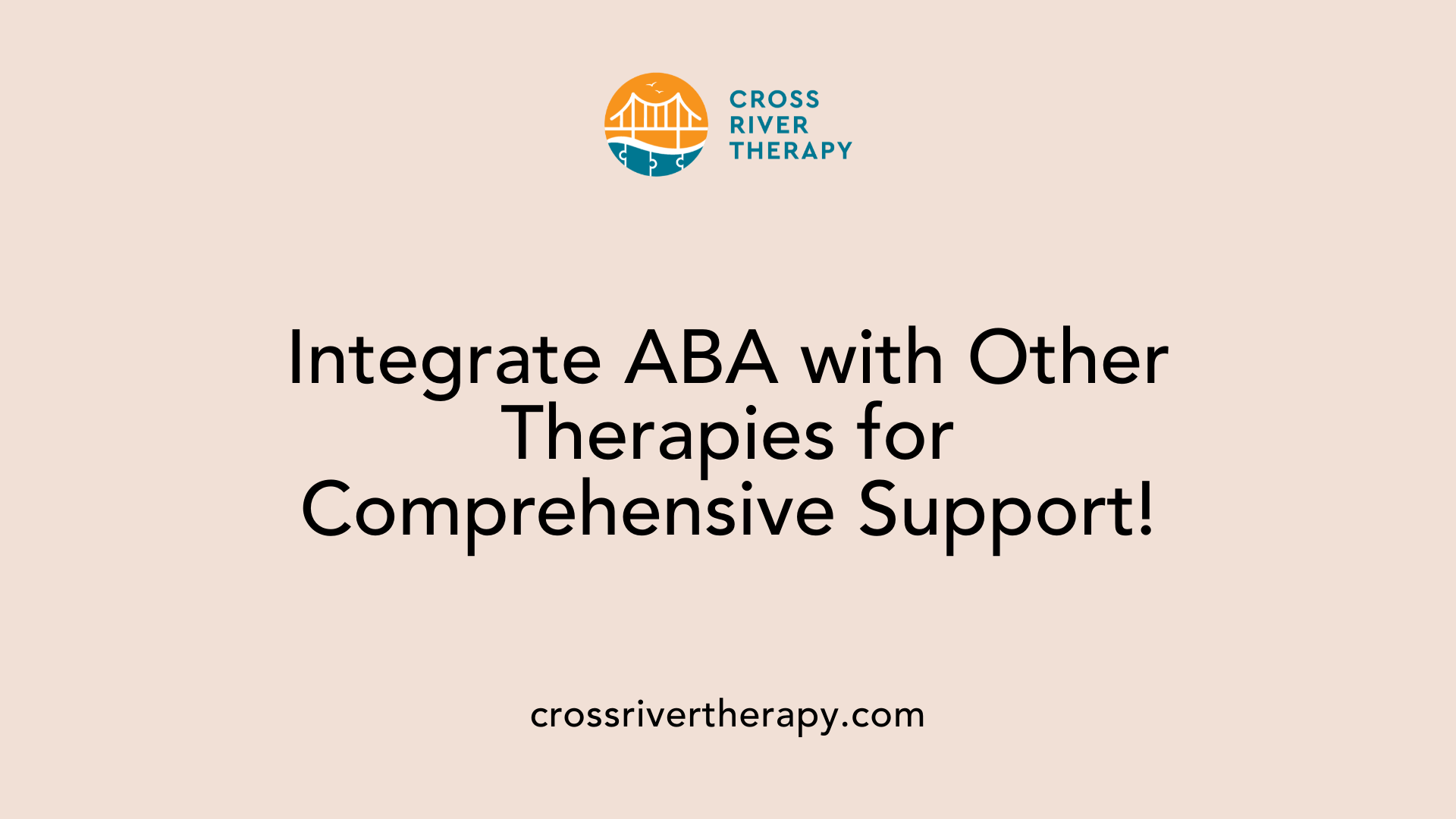Exploring ABA for Non-Verbal Autism
Unlocking Communication Through ABA Strategies
Understanding the Role of ABA in Non-Verbal Autism
For individuals on the autism spectrum, particularly those who are non-verbal, communication challenges are a significant hurdle. Applied Behavior Analysis (ABA) offers a structured approach to improving communication skills through various techniques tailored to each individual's needs. This article examines how ABA can benefit non-verbal individuals with autism by focusing on enhancing non-verbal communication, incorporating visual supports, and integrating alternative communication methods.
Foundations of ABA for Non-Verbal Autism

Understanding the Importance of ABA Therapy
Applied Behavior Analysis (ABA) is a vital therapeutic approach for supporting individuals on the autism spectrum, especially those who are non-verbal. It focuses on understanding behavior and tailoring interventions to improve communication and social skills. This method recognizes that effective communication is essential for individuals who have challenges expressing their needs and emotions.
ABA utilizes various strategies to create a personalized communication system. This may include using picture cards, symbols, or devices that can facilitate expression for non-verbal children. The individualized nature of ABA allows therapists to customize interventions to meet the unique needs of each child.
Principles of ABA Tailored for Non-Verbal Autism
The principles of ABA are applied using a range of techniques aimed specifically at enhancing non-verbal communication. Key strategies include:
- Prompting and Reinforcement: Providing cues to encourage desired behaviors, along with positive reinforcement to promote learning.
- Visual Supports: Tools such as schedules and social stories are employed to help children understand expectations and reduce anxiety.
- Social Skills Training: Role-playing scenarios help individuals practice interpreting and using nonverbal cues.
- Video Modeling: This technique shows children appropriate non-verbal behaviors, facilitating observation and imitation.
Additionally, Functional Communication Training (FCT) is utilized to replace challenging behaviors with suitable communication methods, such as gestures or symbols. Collaboration between therapists, parents, and educators enhances the support system, ensuring consistency across environments for optimal communication skill development.
Enhancing Communication Through ABA

How can ABA therapy help in communicating with non-verbal autistic children?
Applied Behavior Analysis (ABA) therapy is pivotal in supporting non-verbal autistic children in effective communication. One of the primary focuses of ABA is non-verbal communication techniques, including gestures and body language, which serve as important building blocks for language development.
Key Strategies in ABA for Communication:
- Visual Supports: Tools such as picture cards, schedules, and social stories are foundational in ABA interventions. They enhance understanding and provide clarity, reducing anxiety while improving engagement in various activities.
- Augmentative and Alternative Communication (AAC): The integration of AAC systems, including apps and sign language, allows children to express themselves more effectively. These transformative tools empower them to communicate their needs and feelings.
- Functional Communication Training (FCT): This approach teaches non-verbal children to substitute challenging behaviors with appropriate communication methods, utilizing symbols and simple words.
- Structured Play and Social Interaction: Facilitation of social skills through structured play encourages children to initiate and respond to interactions, fostering communication in a supported environment.
- Prompting and Reinforcement: Offering cues and positive reinforcement strengthens the learning of non-verbal cues.
Through consistency and repetition of these strategies, ABA therapy creates an effective learning atmosphere. Collaboration among therapists, educators, and parents is vital, ensuring tailored support that aligns with each child's unique preferences and experiences.
Key ABA Techniques in Practice

What are some ABA techniques for assisting non-verbal children with autism?
Applied Behavior Analysis (ABA) employs a variety of techniques specifically designed to assist non-verbal children with autism. One integral method is the use of visual supports, such as picture cards, schedules, and social stories, which provide clarity and structure. These tools help children understand their environment, thereby reducing anxiety and facilitating communication.
Another vital technique is Functional Communication Training (FCT), which encourages replacing challenging behaviors with appropriate communication methods, utilizing symbols or simple phrases. Augmentative and Alternative Communication (AAC) systems, including apps and sign language, also play a transformative role, empowering non-verbal children to express their needs and preferences effectively.
Consistency and repetition are crucial in ABA practices. Reinforcing communication strategies helps in internalizing these methods. By modeling appropriate nonverbal behaviors and engaging children in enjoyable activities, therapists can promote interaction through gestures or body language.
Social interactions and engagement through ABA
ABA focuses extensively on enhancing social interactions for non-verbal children. Techniques like structured play allow these individuals to practice initiating and responding to social interactions in a safe, controlled environment. Through role-playing and structured scenarios, children learn to interpret and respond to nonverbal cues in social settings.
Table 1 encapsulates some of the key techniques utilized in ABA for supporting non-verbal communication:
| Technique | Description | Purpose |
|---|---|---|
| Visual Supports | Use of schedules, picture cards, and social stories | Enhances understanding and reduces anxiety |
| Functional Communication Training | Teaching suitable communication methods to replace challenging behaviors | Encourages appropriate expression of needs |
| AAC Systems | Tools like apps and sign language to aid expression | Empowers communication without relying on speech |
| Structured Play | Engage children to practice social interactions | Promotes interaction initiation and response |
| Consistency and Repetition | Regular use of communication strategies | Reinforces learning and internalization of skills |
In summary, the integration of these ABA techniques can significantly improve the communication skills and social interaction abilities of non-verbal children with autism.
Integrating ABA with Other Therapies

Comprehensive Therapeutic Support
Integrating Applied Behavior Analysis (ABA) with additional therapies can create a multi-faceted support system for individuals with autism. Among these therapeutic options, speech therapy and occupational therapy stand out.
- Speech Therapy: Focuses on enhancing verbal communication skills and articulation, crucial for individuals who are striving to develop spoken language.
- Occupational Therapy: Assists in developing daily living skills and promotes sensory integration, which can improve overall communication effectiveness.
Together, these therapies address various aspects of communication, ultimately fostering greater independence and social interaction among non-verbal individuals.
Collaboration with Other Therapies
Collaboration among therapists, educators, and families is integral to maximizing the benefits of each therapy.
Key strategies in this collaboration include:
| Strategy | Purpose | Partners Involved |
|---|---|---|
| Joint Therapy Sessions | Enhances consistency in skill development | ABA therapists, speech and occupational therapists |
| Regular Progress Reviews | Aligns goals and strategies | Parents, educators, and therapists |
| Comprehensive Support Plans | Ensures coordinated care across interventions | All involved parties |
Focusing on each person's unique needs ensures that therapy plans resonate with their personal experiences and preferences. As individuals with autism navigate their world, tailor-made approaches promote effective communication and enrich their overall quality of life.
The Importance of Early Intervention and Support

How is ABA effectively applied to improve communication in non-verbal children with autism?
ABA's effectiveness in improving communication for non-verbal children lies in its structured and individualized approach. Strategies such as early intervention are crucial, allowing children to start developing communication skills at a young age. Through the use of visual supports, like picture cards and schedules, ABA facilitates clearer expression of needs and emotions. This method not only fosters comprehension but also minimizes anxiety in activities.
Role of Early Intervention
Initiating therapy early gives children the best chance to succeed. Early interventions can include:
- Functional Communication Training (FCT): Teaching appropriate communication alternatives to challenging behaviors.
- Visual Supports: Employing tools that provide structure and clarity, such as social stories and visual schedules.
Family and Community Support
Family engagement in ABA therapy promotes consistency and reinforcement, which are pivotal in building communication skills. Community support enhances learning opportunities through meaningful social interactions. Collaboration among therapists, parents, and educators helps in developing a cohesive communication strategy that strengthens the child’s ability to connect with others.
Emphasizing these aspects of early intervention not only supports the child's growth but also enriches their social experiences, allowing for a smoother integration into broader contexts.
Embracing a Comprehensive Approach to Communication
The journey to improved communication for non-verbal individuals with autism is deeply personal and multifaceted. As we've explored, ABA therapy provides a robust framework through visual supports, customized strategies, and integration with other therapies. With early intervention and committed community and family involvement, non-verbal children with autism can be empowered to express themselves more effectively, enhancing their quality of life and social interaction. Embracing diverse communication means and respecting the individuality of each person's journey are crucial in the ongoing pursuit of more inclusive and supportive therapeutic practices.
References
- ABA Techniques: Approaches to Nonverbal Communication in Autism
- ABA-based Communication Strategies For Nonverbal Children
- Nonverbal autism: Symptoms, diagnosis, and treatment
- Stimming: Understanding this symptom of autism - MedicalNewsToday
- Levels of autism: Symptoms and criteria - MedicalNewsToday
- Autism: Resources on living with ASD and more - MedicalNewsToday
- Nonverbal learning disorder: Overview, signs, and causes
- Teaching nonverbal autistic children to talk - Autism Speaks
- Seven toilet training tips that help nonverbal kids with autism
- Research yields tips for easing anxiety in nonverbal kids with autism



